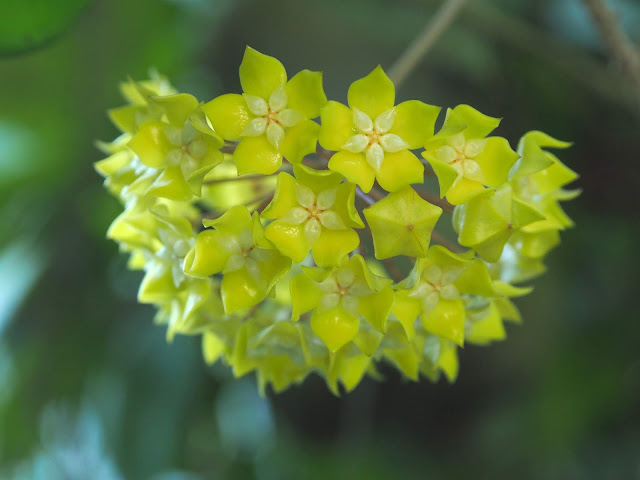Whenever i go out on weekend mornings to look for butterflies, i always see a lot of other things aside from my main purpose. Plants, insects, spiders, and other things unusual to my usual sightings are photographed and remain scattered in my files. They will just find some value if i share them with you. I know some of you are arachnophobes, or afraid for spiders, please just close this. I don't want you to be scared.
This is Nephila pilipes syn. N. maculata; Giant orb weaver
We have lots of this spider in and around our property in the province. When i do not go home on 2 consecutive weekends, even my hoya garden is inhabited by this. It is difficult to pass by its web because it is too sticky and difficult to remove your body. The threads also have bigger strands.
Look at the smiling face of the old man on the top of its head! It even has some straggly beard strands. This is in my hoya garden.
This is the same individual as the close-up shot of the first photo.
And this is the lower part of its web one morning, still complete with jew.

Another individual i saw under the trees in a secondary forest. The face already looks like a scathed old man, with some lacerations as if it had been to a recent fight. It has a more pointed nose and expressions a bit scary than the previous one.

even the design on that band at the mid thorax looks different than the first one.
The web of the 2nd individual in the forest is more or less 2 meters on its oblong length

it is up there at the above center of its web
You can almost see its size in comparison to that tree at the left. Its web in the forest is bigger than that in the hoya garden, maybe because there are lesser prey that happen to pass through it in the forest. They need to big a bigger net trap. This is the farthest distance i can take for the web to be still visible, a little farther and it is not anymore distinctly seen as a spider web.
That in the hoya garden has to be relocated to the nearby area. I let it attach to a long pole together with some parts of the sticky web, then let it drop on some plants in the relocation site. I don't know how long before it can finish weaving its full web again. I hope it manages that soonest, as if a big storm just hit it. At least i am not the human that kills entities like them!




















































